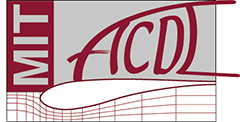ABSTRACT: We present the proper orthogonal descriptors for efficient and accurate interatomic potentials of multi-element chemical systems. The potential energy surface of a multi-element system is represented as a many-body expansion of parametrized potentials which are functions of atom positions, atom types, and parameters. Proper orthogonal decomposition is employed to decompose the parametrized potentials into a set of orthogonal basis functions. The orthogonal basis functions are used to construct proper orthogonal descriptors based on the elements of atoms, thus leading to multi-element descriptors. For a system of M elements, the number of multi-element proper orthogonal descriptors increases as M^3, while the computational cost is independent of M. We compose the multi-element proper orthogonal descriptors to develop two different interatomic potentials. The first potential expresses the energy of each atom as a linear combination of proper orthogonal descriptors, while the second potential expresses the energy as a linear and quadratic combination of the descriptors. The second potential is shown to provide a significant increase in accuracy relative to the first potential, while having the same computational complexity as the first potential. The POD potentials are demonstrated on a wide variety of materials including InP, GaN, TiO2, HfB2, and HfO2, and compared with the spectral neighbor analysis potential (SNAP), atomic cluster expansion (ACE), Allegro potentials, as well as DFT calculations and experiments.
BIO: Dr. Nguyen is a principal research scientist in the department of aeronautics and astronautics. He started his academic career at MIT as a postdoctoral associate after receiving his PhD degree from National University of Singapore in 2005. He was awarded the Springer Computational Science and Engineering (CSE) Prize in 2009 for the development of a software package rbMIT. His research interests include high-order methods for partial differential equations, computational mechanics, molecular mechanics, nanophotonics, machine learning, and parallel computing.

